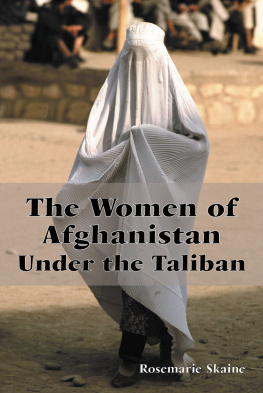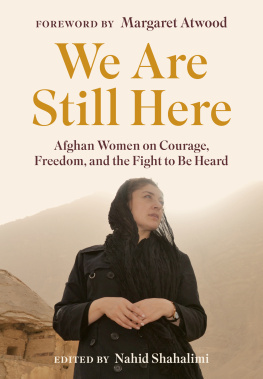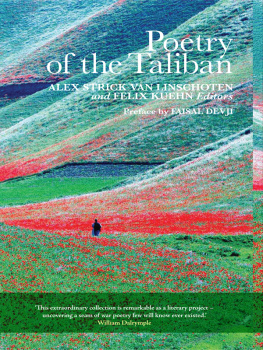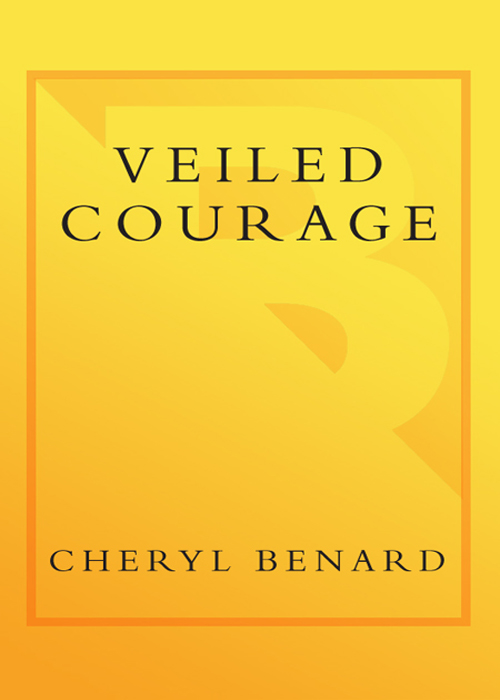
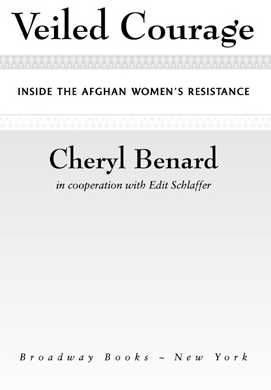
Contents

To return to the corresponding text, click on "Return to text."
Chapter 2
* Life Sketch of Martyred Meena, RAWA. I have lightly edited the English translation of this document.
* See Ayala Emmett, Our Sisters Promised Land: Women, Politics and Israeli-Palestinian Coexistence (Ann Arbor: University of Michigan Press, 1996); Cynthia Enloe, The Morning After: Sexual Politics at the End of the Cold War (Berkeley: University of Calif. Press, 1993); Sarah Radcliffe and Sallie Westwood, eds., Viva: Women and Popular Protest in Latin America (London: Routledge, 1996).
* Rival members of the Afghan pro-Soviet regime.
* Islam requires five daily prayers and provides a format for each of them. However, if one has a particular worry or request or to lend greater power to the prayer, one can add extra prayers and dedicate them to a person or an issue.
* Nongovernmental organizations.
*Websters New World Dictionary, third college edition.
Chapter 3
* See Betty Friedan, Life So Far (New York: Touchstone Books, 2001) and Christina Hoff Sommers, Who Stole Feminism? (New York: Simon and Schuster, 1995).
Chapter 4
* Nechama Tec, When Light Pierced the Darkness (New York: Oxford University Press, 1986).
* Saur is a month in the Afghan calendar during which the 1978 pro-Soviet coup dtat took place.
* The Taliban favored their own ethnic group, the Pashtuns or Pathans, over everyone else.
Chapter 6
* Hizbi Wahdat is a fundamentalist party that is part of the Northern Alliance.
Chapter 7
* See also her editorial on this subject, The Talibans Victims, Washington Post, Sept. 24, 2001.
* Afghan expression for housewife.
*Hijab is the generic term for all variants of Islamic veiling or concealment of women. In areas controlled by the Northern Alliance, the burqa or chaddri was not universal. Many women wore a regionally specific version of the veil, more similar to the Iranian stylea kind of huge scarf that covered not just the head but the entire body, leaving the face free. For girls, this style is especially inconvenient, since it needs to be held shut constantly with the hands and any sort of playing is impossible.
Chapter 8
* Though only one in very many, the World Food Programs standoff with the Taliban was probably the most dramatic because it affected the largest number of people. This program, which was feeding an estimated 40 percent of the population of Kabul, needed to conduct a survey in order to ensure that rations were reaching the intended recipients, to include the neediest families. Those in greatest need were the households headed by women, in particular widows. Since women were not allowed to work, these families were in literal peril of starvation. Acceding to Taliban sensibilities, the WFP very accommodatingly proposed to use only female surveyors to visit the households of women. The Taliban refused to lift its total ban on female employment; the WFP announced that though they were willing to conduct the survey in a way the Taliban found culturally acceptable, if they could not conduct it at all and thus had to conclude that they were failing to deliver aid to the neediest women, they were shutting down the program. For an extensive overview of the Talibans conflicts with international organizations, see Ahmad Rashid, Taliban (New Haven: Yale University Press, 2001). Another major showdown involved the powerful international agency CARE. That organization had, through laborious negotiations with the Taliban, gained permission to hire female health care workers, only to have these women dragged from the organizations vehicle and beaten by other Talibs. This incident is described in the organizations own report (Jonathan Bartsch, CARE Afghanistan Case Study: Violent Conflict and Human Rights, CARE Afghanistan, Peshawar, 1998).
* This is in the context of the WFP standoff described above. The specific Jewish designation probably occurred to him because of the simultaneous scandal over the Taliban order that Afghan Hindus were to mark themselves by wearing a yellow badge, criticized as resembling the Jewish star of Nazi days.
* For example, see the article by Howard Kleinberg, Afghan Women, Not Statues, Need to Be Rescued, Baltimore Sun, March 8, 2001.
*Some of the statements were abbreviated for this text.
* Parvin Darabi is the author of Rage Against the Veil (Amherst: Prometheus Books, 1999).
Chapter 9
* Albert Borgmann, Crossing the Postmodern Divide (Chicago: University of Chicago Press, 1998), p. 5.
*Postmodern PoliticsAn Interview with Walter Truett Anderson, Reclaiming Politics, fall/winter 1991, p. 32. See also Walter Truett Anderson, Reality Isnt What It Used to Be (New York: Harper and Row, 1990).
*It would be more accurate to use the term North, as in North-South divide, but for reasons of coherence I will refer to the industrialized countries as the West.
*In Afghanistan under the Taliban, a surgeons salary was U.S. $5 per month.
* For a number of very interesting historical case studies, see T. V. Paul, Asymmetric Conflicts (Cambridge: Cambridge University Press, 1994).
Chapter 11
* The title of this NGO study reflects the moral dilemma that shaped the work of aid organizations in Afghanistan: Violent Conflict and Human Rights: A Study of Principled Decision Making in Afghanistan, October 1998, CARE, Peshawar.
* This group can best be described as a lot of women and Mr. T. Kumar, the wonderful Washington representative of Amnesty International.
* It seems likely that a similar loophole would apply to some other countries in that region, and certainly to countries such as Iraq.
* Rich Bragg, Afghan and Pakistani Tribe Lives by Its Guns and Honor, The New York Times, Sunday, Oct. 21, 2001.
* Nicholas Kristof, The Veiled Resource, The New York Times, Dec. 11, 2001.
* On January 5, 2002, ABC aired a report from Kabul by its correspondent Jim Wooten. He had met a group of Afghan women, former schoolteachers, and interviewed them about the burqa, their life under the Taliban and their expectations and plans for the future. One of the women had organized a home school during the Taliban years. Several of them had just gone to the new Ministry of Education, asking for their jobs back. The women explained to him why, when they went out on the street, and even though they despised it, they still wore the burqa: because they remembered the Northern Alliance from its earlier period of rule and werent confident that the situation as yet was safe. Their remarks were eerily borne out, as the journalist reported. Northern Alliance soldiers arrived at the house where he was conducting the interview and arrested the familys father. Before releasing him, they warned him not to talk to, or allow any of the women in his family to talk to, any more foreign journalists on issues such as women, the burqa or politics.
* Jeffrey Goldberg, Inside Jihad U.: The Education of a Holy Warrior,
Next page

